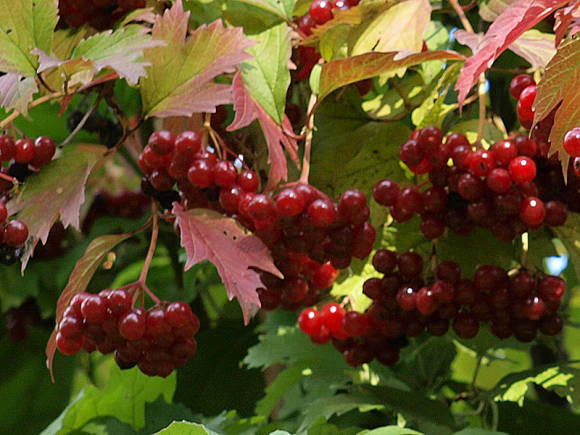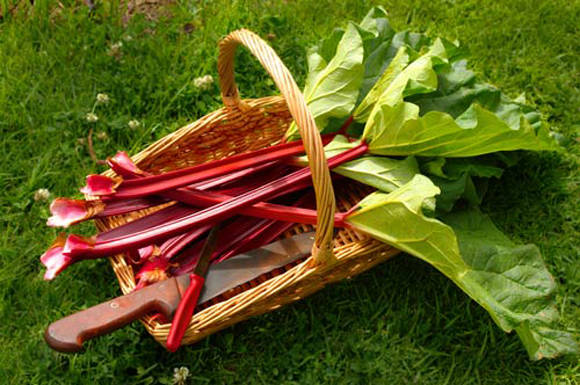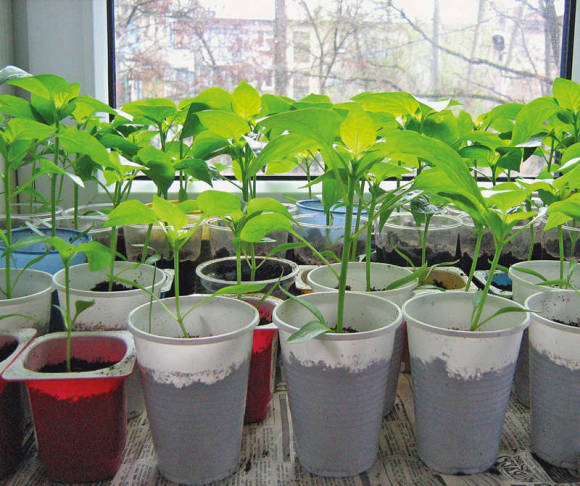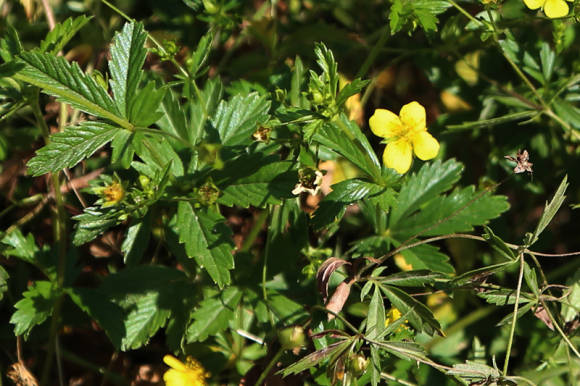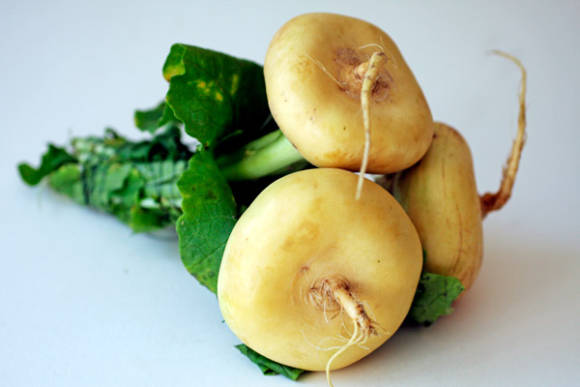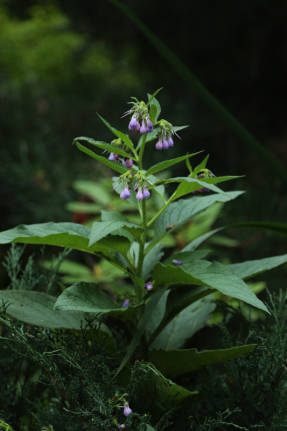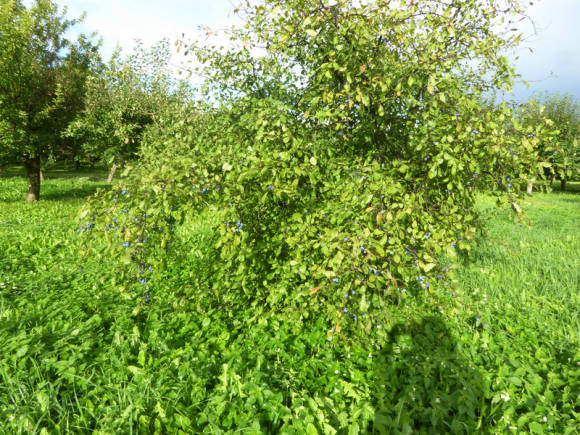To make you happy with blooming clouds of self-grown calibrachoa every summer, you need to cut the plants twice a season. In July, cut and root cuttings from mother plants, from which mother plants will grow by autumn, which will remain to winter in a cool, bright room. In February and early March, already from these mothers grown by you, you need to cut and root the cuttings, which by summer will become a decoration for your hanging pots. And then again - cuttings from these plants for winter storage, and in winter - again cuttings for growing new plants.

It is possible by sowing seeds, but is it necessary ...
Recently, you can find calibrachoa seeds on sale. Of course, if there is an irresistible desire, then you can try to grow these flowers from seeds. But does it make sense ... The fact is that the slender shoots of calibrachoa are even more capricious than petunias. To get flowering specimens by summer, you need to sow seeds in the first half of February. Seedlings grow for a long time, reluctantly, slowly gaining strength.
Therefore, it is much easier to propagate the plant by cuttings. It is also more profitable in material terms - you can root a lot of cuttings from one summer mother plant of calibrachoa. And in February-March, cut off about the same number of cuttings from them. That is, the number of plants you produce grows exponentially.
Vegetatively propagated varieties of calibrachoa bloom more luxuriantly than those grown from seeds. The fact is that at the genetic level they have a “set” - not to set seeds. This means that the plant does not spend energy on this, giving all of them to flowering. Faded flowers, drying out, simply fall off, leaving no seed pod behind, which means they do not spoil the appearance of the bush, it always looks neat.

Cutting technology
Both in summer and in winter grafting, one should act according to the same scheme. With a sharp instrument (so as not to pinch the vessels of the plant), you need to cut off the tops of the shoots so that there are 4-5 internodes on the cuttings. In general, I use the middle parts of the shoot as cuttings, the main thing is that the shoot is not lignified. Such cuttings, although worse, still take root and give rise to plants.

 |  |
Next, cut off the leaves. The bottom pair is a must, this internode will be immersed in the soil. We leave 1-2 upper pairs of leaves, the rest that are below the base of the cutting, either cut off completely, or cut the leaf blade in half. If you leave a lot of green mass, the stalk will be forced to evaporate moisture from the surface of all leaves, spending a large amount of energy not on the formation of the root system, but on evaporation. But almost all the leaves cannot be removed - after all, the stalk still feeds on them. Find a middle ground.
 |  |
If the internodes are very short, then sometimes 2-3 internodes have to be “exposed” from below in order to fix the cutting in the soil. Do not expect every cut to take root, but the yield will still be great.
You can plant the cuttings in pre-soaked peat tablets and place the container with the plantings in a special greenhouse for plants or, for example, in a transparent cake box. But I do it my way. Before grafting, I prepare planting containers - in 2-3 places I cut the bottoms in small, 100-gram, plastic cups. I pour there a light, permeable, slightly moistened soil (if the soil is stored in a bag with small holes, then it does not dry out unnecessarily, retaining its natural moisture. I dip the lower parts of the cuttings in Kornevin powder and gently immerse the bare internode in the soil. I crush the soil in a glass to the base If the "squeeze" the cutting with soil is not good enough, rooting will go worse.But I don’t fill it! It is important to plant the cuttings first, and then water, because with the reverse sequence, a crust forms on the surface of the washed wet soil, making it difficult for the small roots to breathe.
 |  |
I put the cups in a lattice plastic box and cover with foil so that little air remains. If you "seal" the box tightly, then the cuttings will simply rot. And if you open it too much, it will dry out. That is, I do not fold all the edges of the film under the bottom. The film should be foggy, but condensation should not collect in droplets.
 |  |
I choose the place for the boxes meticulously - the direct sun should not fall on the cuttings (it will "cook" instantly). This moment is especially relevant for summer cuttings, when "the sun is still high." Therefore, the boxes have to be covered with clean white bags. Putting cuttings on the floor with a greenhouse, in the hope of protecting from sunlight, is not necessary - they will quickly rot.
Now, for 1.5-2 weeks, it is necessary to spray the cuttings from a spray bottle with a fine spray every day and air the mini cuttings. In the heat, you have to spray it twice. Ideally, in the area of the leaf cuttings, the moisture should constantly be in a state of fog, but the soil should not be waterlogged.
Zircon can be added to the spray water a couple of times. It not only invigorates the plants, but also helps speed up the rooting process.
 |  |
You can easily determine if your cuttings are rooted - the roots will be visible through the transparent walls of the cup. Then you should switch to moderate soil watering and gradually free the boxes from the film - for several days, let the film just lie on the edges of the box, do not tuck it, and then remove it altogether. With lighting, look according to the situation - teach young plants to it gradually. The crown of the shoots that have begun to grow should be pinched. Then you can repeat this technique a couple more times to induce more tillering. With spring cuttings, this procedure should be given more attention to form a neat ball by summer.
As the roots are woven into the space provided, future queen cells should be transplanted into pots with a diameter of 11-13 cm. You can hang them on the guides of the greenhouse. I plant in 0.5 liter glasses with holes in the bottom. It is preferable to use opaque pots so that light does not penetrate the walls and does not contribute to the development of algae on the inner walls of the glass.
Mothers obtained from July cuttings should be kept in a very bright room in winter at a temperature of about + 12 ... + 15 ° C, for example, in a heated greenhouse or veranda. If necessary, do additional lighting. And in no case do not fill!

Closer to spring, in February-March, everything will be repeated from the beginning. During rooting, cuttings need a temperature of about + 20 ° C, but after transplanting - no more than + 15 ° C. And good lighting so that the shoots do not stretch, the plants are squat, the leaves do not turn yellow. In April, if the situation is successful, rooted and expanded plants can move to an unheated greenhouse.

A very important point when growing calibrachoa is to prevent the appearance of powdery mildew, which likes to manifest itself at the most unexpected moment and develops very quickly. As a prophylaxis against most fungal diseases (and bacterial ones too), I regularly spray and water the mother liquors with calibrachoa with a solution of “harmless” biological preparations Alirin-B or Gamair.
If you find powdery mildew too late, it is better to treat the plants with Topaz (according to the instructions).
Very often, especially when kept in a greenhouse, aphids, whiteflies, spider mites inhabit the mother liquors. Against aphids, I first use the biological drug Biotlin. It usually helps. Fitoverm acts as a "biological weapon" against the last two pests. And already only in the case when nothing takes pests (usually in summer, in the heat), I use Aktar or Alatar.
Read more about growing calibrachoa - in the article Calibrachoa: cultivation and reproduction.

